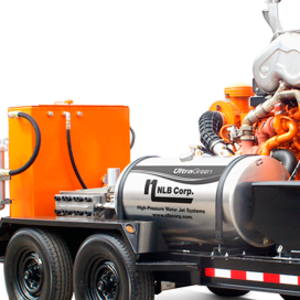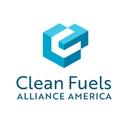Spotlight NLB: Celebrating 50 Years of Innovation, Safety Solutions

PHOTO: NLB CORP.
April 15, 2021
BY Matt Thompson
This year marks the 50th year of business for NLB Corp., the largest manufacturer of high-pressure water equipment and accessories. Rick Sloan, sales manager at NLB, says that during that time—and particularly in the last 10 years—the industry has evolved tremendously, with a focus on automated systems.
“The biggest drive behind the move towards automated, or as we term it, hands-free equipment, is really safety,” Sloan says. “What we’re trying to do is get that high-pressure hose out of the operators’ hands.” He adds that many of the largest industrial cleaning contractors in the country have a goal of being fully automated. Many of them, he adds, are at 90% or 95% automation.
Those changes have resulted in a safer environment for cleaning, but also bring some advantages for asset owners, including ethanol plants, Sloan says. Manual cleaning might not clean evaporators as well as automatic cleaning does, according to Sloan. Because the operator doesn’t want to pull the cleaning lance out of the tube while it’s under pressure, the end of the tube may not get cleaned as thoroughly, as the operator will turn off the water as the lance reaches the end of the tube. That’s not the case with automated cleaning, Sloan says.
“If my tube is cleaner, my heat transfer is going to be better,” Sloan says, which may allow ethanol plants to go longer in between cleanings or see energy cost savings. “Our focus of the last few months has been trying to garner that information so that we can present it to the asset owners,” he adds.
Ethanol plants can benefit from automated systems in other ways, too. The systems collect data on the plant itself and the cleaning process—how many tubes were cleaned, what tubes were blocked, how much water was used, etc.—which can benefit both the cleaning contractor and the plant, Sloan says. “I think having that data is important to both the asset owner and the contractor.”
NLB’s partnerships with Peinmann, which supplies automatic feeders for cleaning, and with Terydon, which offers a means of controlling those automatic feeders through a tablet, as well as a feature called smart indexing, which allows the system to map the tubes, allows NLB to offer high-tech cleaning solutions to the ethanol industry and industrial cleaning contractors.
“We are known for having the highest-quality, longest-lasting equipment on the market,” and the innovation that brings to the industry, Sloan says.
Advertisement
Advertisement
Advertisement
Advertisement
Related Stories
NREL announced the findings of the Assessment of BQ-9000 Biodiesel Properties for 2024, the eighth in a series of annual reports documenting the quality of biodiesel from U.S. and Canadian producers participating in the BQ-9000 program.
Kintetsu World Express Inc. has entered into a new agreement with Shell Aviation regarding the use of SAF. Under this agreement, KWE will adopt Shell Aviation's digital platform "Avelia" to swiftly address shippers' low-carbon transportation needs.
Aemetis Inc. released Q2 results, reporting increase revenue when compared to Q1. During an earnings call, company officials detailed progress with the company’s RNG, ethanol, biodiesel, SAF and carbon CCS projects.
Calumet Inc. on Aug. 8 confirmed its Montana Renewables biorefinery is currently running at full capacity. An initial phase of the company’s MaxSAF initiative remains on track to boost SAF capacity to up to 150 MMgy by mid-2026.
Marathon Petroleum Corp. on Aug. 5 released second quarter financial results, reporting improved EBITDA for its renewable diesel segment. The company primarily attributed the improvement to increased utilization and higher margins.
Upcoming Events










